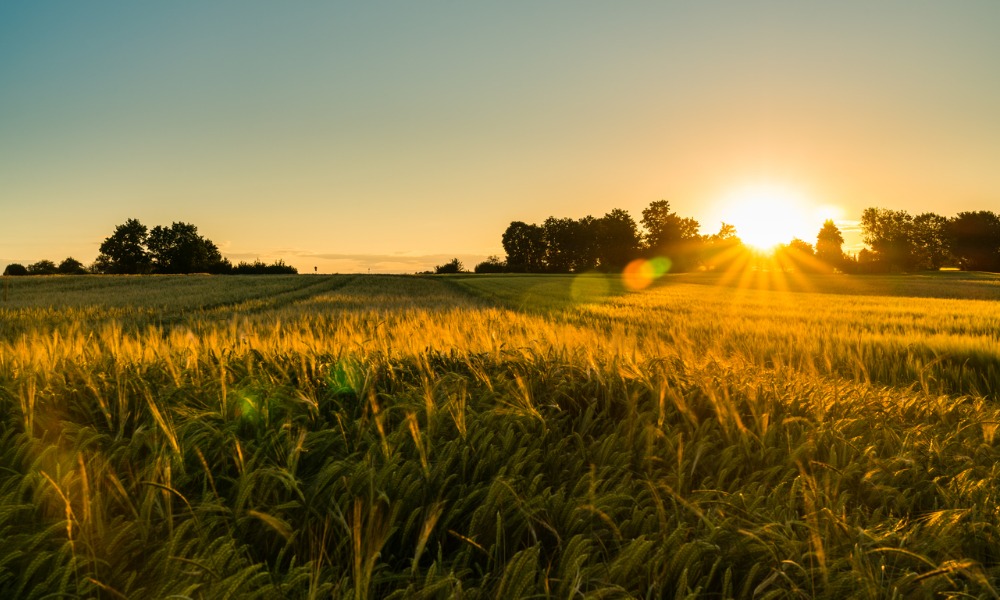Managing partner behind farmland fund explains the unique drivers in this asset class, and why Canadian farmland stands out

Investors have been funnelling money into novelty for decades. Our obsession with what’s new, revolutionary, and potentially world-changing has seen tech become the leading equity growth sector. Themes like AI have occupied most of our mental real estate, and investments as wide as utilities, commodities, and real estate have all been tied back — however tenuously — to that same theme. In investors’ drive to be ahead of the curve, they often miss value in more fundamental industries. That includes perhaps the most fundamental industry: agriculture.
Farmland, especially Canadian farmland, offers a very interesting returns profile right now. Demographics and economics are behind it. The world is growing, the world is getting richer, and that growth demands more crops. It trades at an attractive valuation, with a tendency to mean-revert. Perhaps most importantly, in a period of low growth and high inflation farmland tends to perform exceptionally, because everybody needs to eat.
“What I like about farmland is that the macro is really powerful and simple to understand,” says Stephen Johnston, Managing Partner at Omnigence Asset Management. “But on the portfolio side, there are a lot of benefits from adding farmland to a 60/40 portfolio. It’s genuinely diversifying, with very low correlation to traditional asset classes, and it maintains that lack of correlation during market events. It has very non-volatile returns, but still has high nominal rates of return in aggregate.”
During the stagflation of the 1970s, Johnston noted, Canadian farmland appreciated by 400 per cent nominally and 275 per cent adjusted for inflation. In market crash moments such as the dot com bubble and the great financial crisis, farmland also remained insulated from the wider drawdowns. While drawdowns do occur in farmland, Johnston notes that they tend to be few and shallow.
Johnston went into further detail on the macro picture, explaining that as more countires worldwide enter a middle class income bracket — defined as GDP per capita of USD$5,000+ per year — their citizens add an additional three ounces of protein per day to their diet. The compounding impact of protein farming means that this small meat addition could effectively double an individual’s crop consumption.
Omnigence accesses farmland through Veripath Partners — a private asset portfolio of farmland. Their strategy revolves largely around productivity-adjusted pricing. They calculate farmland value on a price per ton of wheat growing capacity. That metric makes Canadian farmland stand out. In Canada, farmland tends to be valued at around $3,000 per ton of wheat. In other developed countries, that price is almost double. Canadian farmland is notably underfinancialized and underinvested, meaning there is a demonstrable value play to be found in Canadian farms.
Location is key to Johnston’s outlook, too. He notes that the productivity-adjusted pricing in Southern Ontario is not nearly as attractive as it is in the prairie provinces of Alberta, Manitoba, and Saskatchewan. That is largely because most of Ontario’s farmland is located near to the GTHA and Ottawa. Farmland near those cities, therefore, tends to be priced not as farmland but as development real estate for residential. That comes with higher prices and greater interest rate sensitivity. Farmland in the prairies, and other areas identified as attractive on a productivity-adjusted price basis, tend to lack sensitivity to interest rates. Johnston notes that the lion’s share of Veripath’s portfolio is in the prairies, which represent around 80 per cent of Canada’s total farmland.
Veripath uses productivity-adjusted pricing to manage valuation risk. However, Johnston accepts that there are some areas of risk inherent in farmland: namely weather and farming practices. Their model, however, is to own land and rent it for cash to farmers. That means the farmer assumes the operational and weather-related risks. Veripath still measures weather, factoring in the risk of climate change into their models. Johnston says they use two key metrics to guide their decisions: historical volatility of yield, and historical trend of yield. The former will indicate periods of good and bad weather, the latter will indicate the direction of the weather over time.
Climate change, Johnston adds, is a global threat to farmland, but another reason why Canada stands out. While the Intergovernmental Panel on Climate Change says that on aggregate, climate change will reduce global farm productivity, it has found that productivity will increase in northern latitude farming. Canada and Russia are the two countries whose farms are more likely to benefit from climate change. Johnston says we have already seen that trend with crops being grown further and further north.
While the profile of farmland may be attractive to advisors, Johnston admits that there has largely been a problem of access. Because the area is underinvested by financial institutions, Veripath is one of the few retail-accessible funds out there that would offer advisors a diversified portfolio for their clients. It’s that diversification which Johnston notes is a final key aspect of a successful farmland strategy.
“What you don’t want to do is take your money and buy a single piece of farmland, because now you’re exposed to the weather in one area and the operational risk,” Johnston says. “You want to be with someone who has a large portfolio, diversified in terms of operators and location.”



